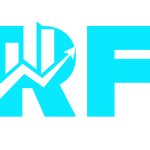5 Tips For Profitable Supply And Demand Trading

Supply and demand zones are areas on a chart where the price has made a strong move either up or down, creating an imbalance between buyers and sellers.
These zones are important for forex prop trading because they can indicate where the price is likely to reverse or continue its direction, providing potential entry and exit points for traders.
In this article, I will share five unwritten rules or tips for supply and demand trading that can help you improve your trading performance and profitability. Please note that these tips are subjective and should not be taken as absolute truths. You should always test and verify any trading strategy before applying it to your own trading. Let’s go:
1. Trade supply and demand zones that are fresh and recent
When you’re trading supply and demand, avoid trading zones that were created a long time ago. This means that you should look for fresh zones that have not been tested or touched by the price since they were formed.
Old zones are less reliable and relevant than fresh zones because they may have lost their significance and strength over time.
The market conditions may have changed, and the supply and demand imbalance may have been resolved or shifted. Therefore, trading in old zones may result in false signals and losses.
2. Trade in the direction of the most recent high or low
Another effective rule for supply and demand trading is to only trade in the direction of the most recent high or low on the chart.
This means that you should look for supply zones above the most recent high and demand zones below the most recent low, and trade them accordingly.
Trading in the direction of the trend is better than trading against it because it increases the probability of your trades being successful.
The trend is your friend, as the saying goes, and you don’t want to fight the market forces that are driving the price.
3. Check multiple timeframes to confirm the validity of the zones
A third tip for supply and demand trading is to use multiple time frames to confirm the validity of the zones. This means that you should look for zones that are visible and consistent across different time frames, such as the weekly, daily, or a 4-hour charts.
Analyzing multiple timeframes can help you filter out false signals and increase the accuracy of the zones. It can also help you identify the bigger picture and the dominant trend of the market.
You should always trade in the direction of the higher time frame and use the lower time frame to fine-tune your entries and exits.
4. Use confluence factors to increase the probability of success
Confluence factors are other technical tools or indicators that can support and enhance the supply and demand trading strategy.
They can include support and resistance levels, trend lines, Fibonacci levels, moving averages, oscillators, or candlestick patterns.
Using confluence factors can help you identify the best zones to trade and the best times to enter and exit the trades. They can also help you manage your risk-to-reward ratio and increase your confidence and discipline.
You should look for zones that have at least two or more confluence factors and trade them accordingly.
5. Use timely exit to secure your profits
My fifth and final tip for supply and demand trading is using timely exit to secure profits. This means you should not be greedy or fearful.
Close your trades when the price reaches your predetermined target or when the market conditions change.
Using timely exit can help you protect your profits and avoid losing them due to sudden price movements or reversals.
It can also help you reduce your exposure to risk and volatility. It can also increase your consistency and discipline.
You should look for signs that the price is losing momentum or breaking out of the zones and exit your trades accordingly.
Supply and demand trading is a powerful and simple way to trade the forex market. By following these few tips, you can enhance your prop trading performance and results.




